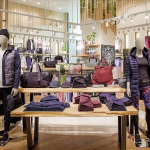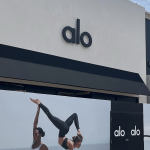VF Corp.s outdoor coalition of brands will play the lead role in helping the apparel giant meet its recently upgraded five-year growth plans, the companys new CEO told analysts last week. Moreover, the outdoor coalition is expected to grow from 33% of VFCs revenue in 2007 to 39% of the total in 2012.
The coalition, which includes The North Face, JanSport, Eastpak, Napapijri, Kipling, Vans, Reef and Eagle Creek, will contribute $1.5 billion of the $4 billion in additional revenue the company expects to generate by 2012, according to new CEO Eric Wiseman in a presentation at the ICR XChange conference.
The $1.5 billion sum is based on organic growth of existing brands and does not take into account future acquisitions. VF said 31% of the growth will come from international, 31% from expansion of its retail operations and 38% from the U.S.
On January 9, VFC raised its revenue growth target to a range of 8% to 10% annually from its previous guidance of 6% to 8%. The company established a goal of $11 billion in revenues by 2012. Management said they expect strong organic growth of 6% to 7%, accompanied by 2% to 3% growth attributed to acquisitions. Last week, Wiseman added that the company is targeting 10% to 11% earnings per share growth annually over that period.
Wiseman said the outdoor coalition is expected to grow high-single-digits to low-double-digits over the five-year period. “The biggest contributor to our growth will be the Outdoor coalition,” he said at ICR. “That has been the biggest driver of our growth. We will continue to invest there. We think we have great organic growth opportunities, as well as acquisition opportunities.”
VF thinks it can grow its owned-retail business from $1 billion today to $2.4 billion in 2012. “Getting there is going to require an annual growth rate of about 18% in our owned retail businesses,” Wiseman said. “And it will increase the mix of our total corporation in owned-retail from 15% to 22%.”
The North Face will contribute the most dollar growth to VFs international business.
Wiseman insisted that VFC would remain active in acquisitions, but said “we're so confident in our organic growth rates — we want to make a lot of investments in our own brand.”
VF acquired The North Face in 2000, followed by Vans, Kipling and Napapijri in 2004, Reef in 2005, and 7 For All Mankind and lucy last year.
All those businesses have had a compound annual growth rate in excess of 20% since VF acquired them.
VF expects acquisitions to account for $900 million in additional revenue by 2012.
The Caterpillar brand was described as a brand with a dual personality. In the U.S., it is a work industrial brand, but internationally it is a lifestyle brand. About 80% of the pairs sold under the Caterpillar brand are sold in the international markets.
The Harley-Davidson brand sees 40% of sales through the dealer bike networks. While only about 10% of riders are women, management said they sell about 50% of H-D pairs to women due to the fashion mix.
The Merrell business will exceed $400 million this year, a nice increase from the $35 million the brand was doing when Wolverine World Wide acquired it in 1997. WWW said about 50% of the Merrell business is under outdoor performance and 50% in the “fusion or casual environment.” Childrens makes up about 10% of sales.
Looking at the nascent Merrell Apparel business, management sees the business making up about $200 million to $250 million of a total $1 billion dollar opportunity for the Merrell brand. They said they learned some things they did wrong in the first year, but also said they kept it at a size where they could handle the mistakes. The international launch for the apparel business was stronger than the domestic side.
WWW will see some upside in the first half of 2008 as they anniversary the year-ago hit from the EU anti-dumping duties, which accounted for about four cents a share in negative impact in H1 last year.
Operating margins are expected to improve about 40 to 50 basis points for the year. Management has an internal target of 12.5% of sales.













